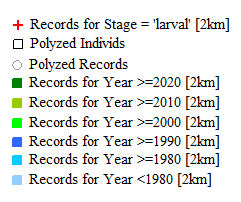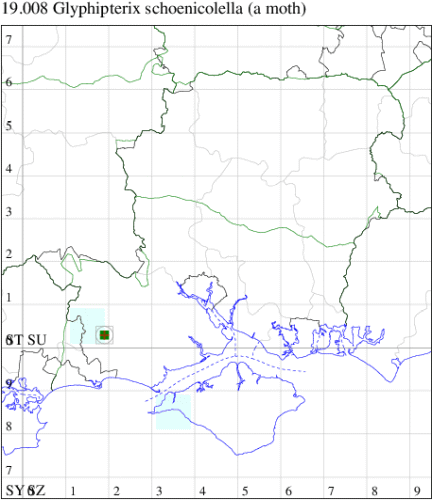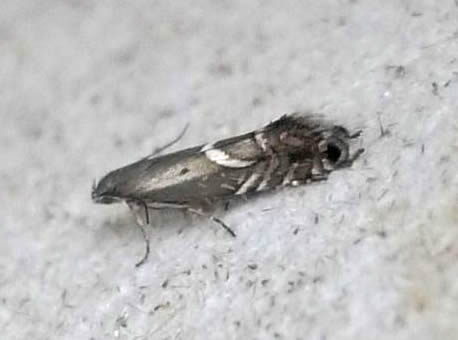Glyphipterix schoenicolella
Checklist Number19.008 [B&F: 0392]
Verification
Record will normally be accepted but photo evidence may be required - check with CMR if not sure of identity
Classification
| Family: | Glyphipterigidae |
| Subfamily: | Glyphipteriginae |
| Genus: | Glyphipterix |
| Species: | schoenicolella |
| Authority: | Boyd, 1858 |
Nationally scarce (Na) in fens, bogs and dune slacks from Dorset to Cornwall, in the fens of East Anglia, in the west and north of Scotland and in the west of Ireland. In Hampshire the foodplant occurs very locally in the New Forest, but the moth had not been found until February 2023, when Jack Oughton found larva to be plentiful in the Burley area. There is a single old record from the Isle of Wight. Wingspan 6-9 mm. The adult moth is very similar to Cocksfoot Moth G. simpliciella, but in G. schoenicolella the forewing is more evenly coloured, hardly tinged with copper in apical third; costal strigulae less evenly spaced, usually a larger gap between third and fourth from base: hindwing dorsal cilia whitish-tipped, becoming entirely white towards base (MBGBI Vol 2). Larva feeds within ears of Black Bog-rush Schoenus nigricans, over-wintering in a cocoon.


VC10 Isle of Wight
| Site | Date | Quantity | Recorder | Stage |
|---|---|---|---|---|
| Isle of Wight (SZ38) | 1884 | one | W H B Fletcher | Adult |
VC11 South Hampshire
| Site | Date | Quantity | Recorder | Stage |
|---|---|---|---|---|
| Burley, NF (SU10) | 26/02/2023 | - | Jack Oughton | Larval feeding signs |


